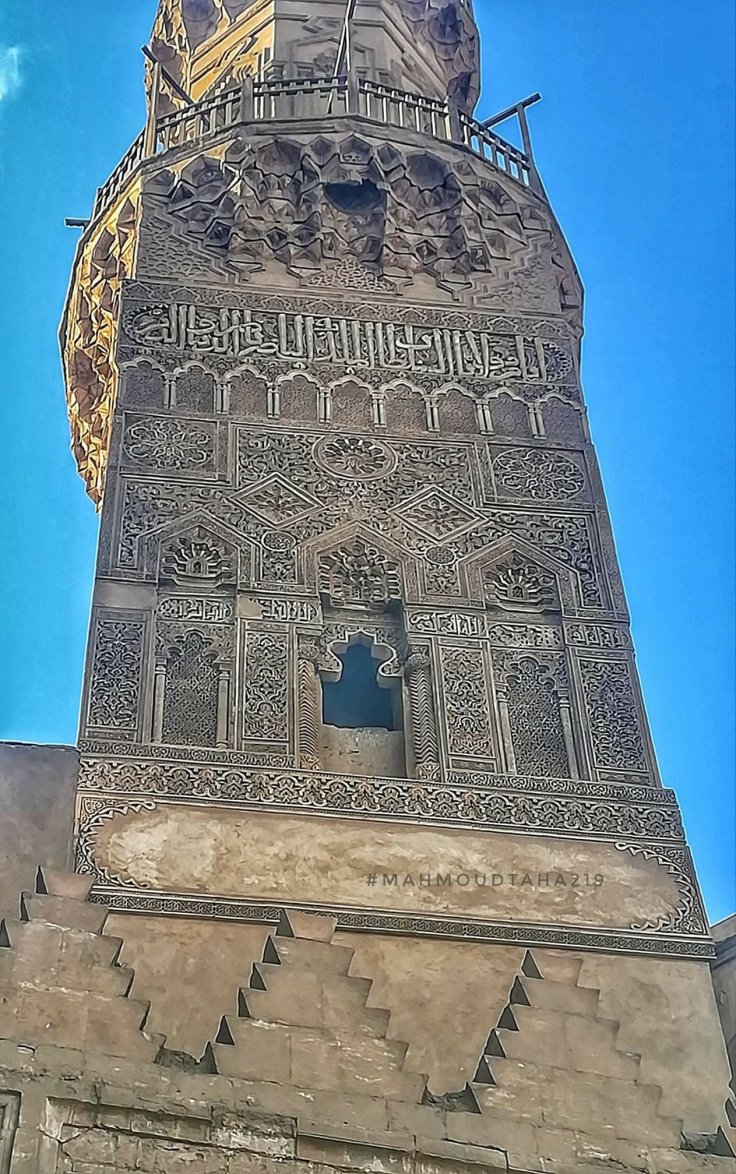
لوحة جصية من الفن الإسلامي.
– شملت الدورة الأولي من مئذنة مدرسة الناصر محمد الكثير من الزخارف المنفذة من الجص، فنجد العقود المدببة التي تماثل تلك العقود التي تجمع النسق الفاطمي والأيوبي بأسفلها شريط من الخط الكوفي يحمل آية الكرسي بداخلها عقود ذات فصوص أندلسية، وأعلي العقود المدببة تبرز ميداليات زخرفية تحيط بها أقسام من الزخارف النباتية وزخارف هندسية مشابة للزخارف الهندسية التي في المحراب الفاطمي بجامع الأزهر، فوق ذلك شريط من المحاريب بطول واجهة المأذنة يعلوه شريط كتابي من خط الثلث المملوكي يحمل عبارة (أيام مولانا السلطان الملك الناصر ناصر الدنيا والدين)، يعلوه دعامة من المقرنصات تحمل شرفة الدورة الثانية، ولكثافة الأعمال الجصية يرجح بعض المؤرخين أنه شارك في تنفيذها حرفيين مغاربة أو أندلسيين، وهذه المئذنة تعلو مدخل مدرسة الناصر محمد بشارع بين القصرين التي أكتملت في عام 703هجرية-1304م، وهي من المآذن الجصية المعدودة في مصر الإسلامية.
A fresco of İslamic art.
– The lower rectangular section of minaret of Sultan Muhammed madrassa(completed in 1304) has many of stucco decorations, includes keel-arched niches, decoration of medallions, and sections filled with floral and geometric patterns. The medallion and keel-arched niches are similer to those of earlier fatimid and Ayubbid decorations, some of geometric patterns resemble to those used in fatimid mihrab of Al-Azhar mosque, and floral patterns are characteristic of stucco carving from this period. A band of Kufic script runs through keel-arched niches carries Kursi Ayat, while a large of inscription in Thulth script crowns top of rectangular section, just below sculpted muqarnas, and contains (Days of our lord Sultan, King, Al-Nasser, supporter of life and religion). Some of historians to density and quality of stucco work here, that craftsmen from morocco or andalousi participated in its creation. The minaret is above of entrance of Al-Nasser Muhammed madrassa in al-Muizz street in Cairo, and it’s one of several stucco minarets in Islamic Egypt.
